
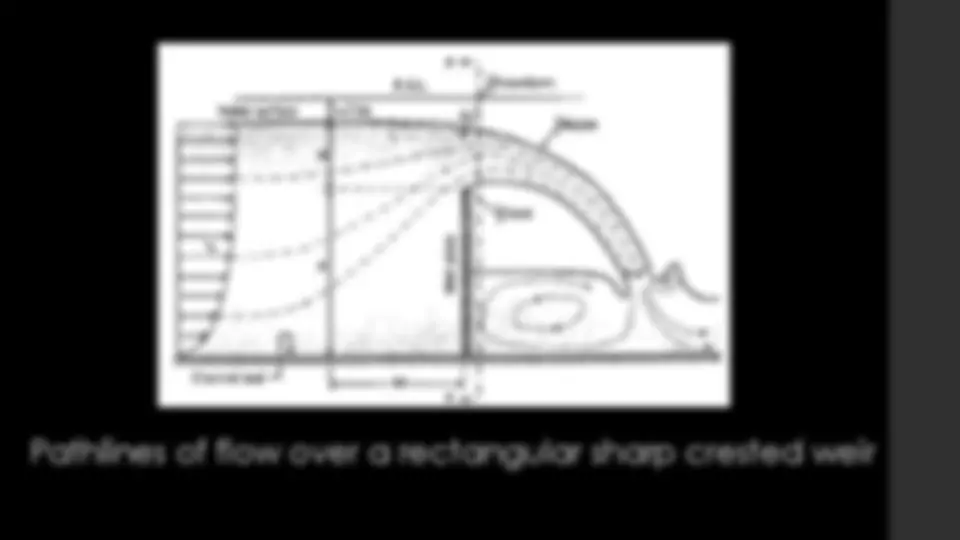
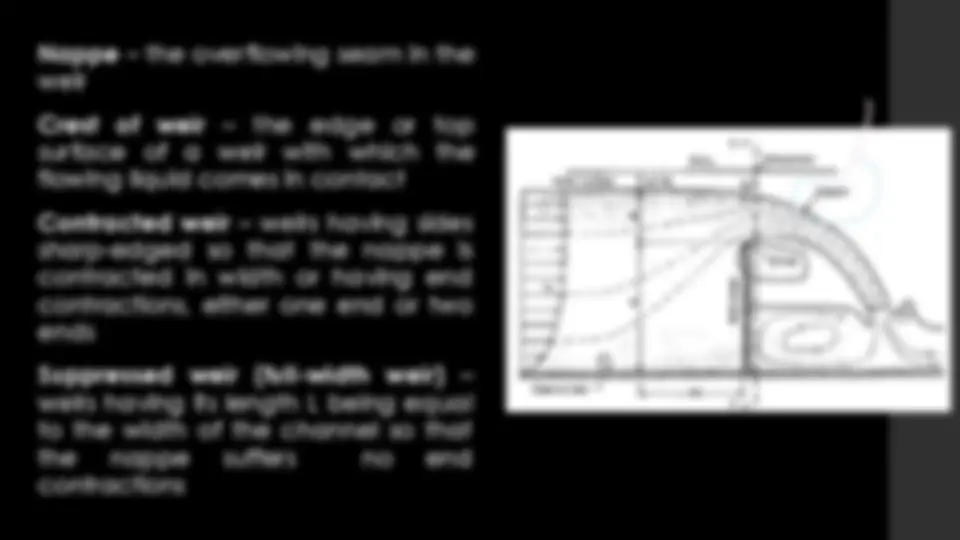
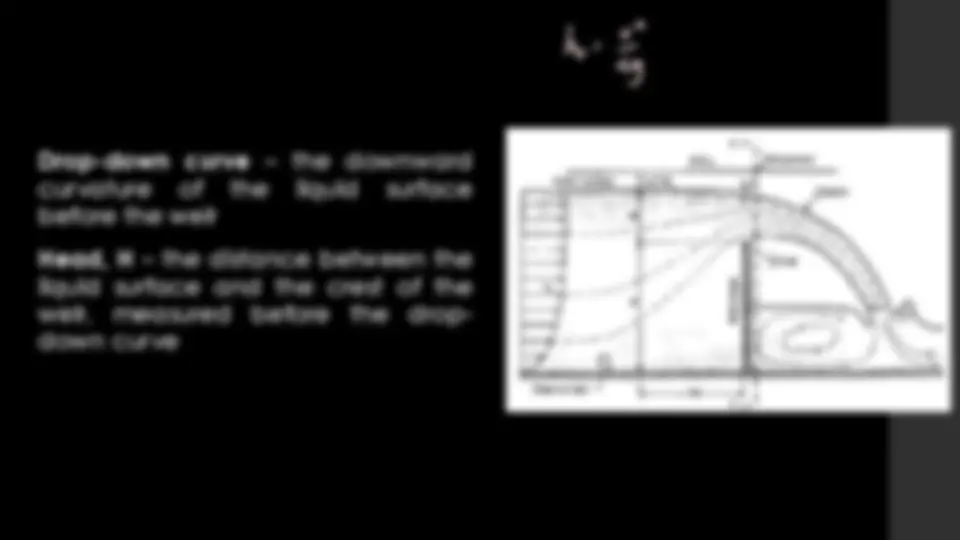
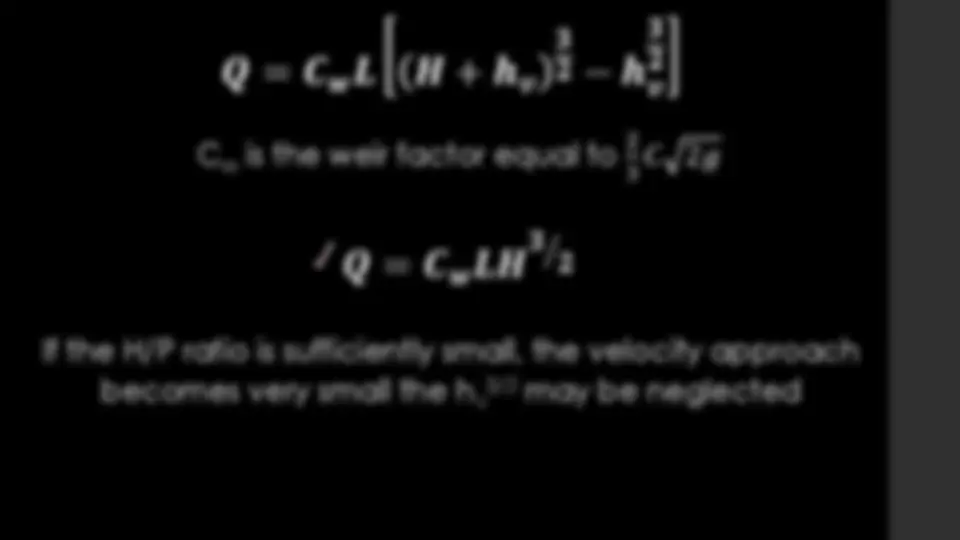
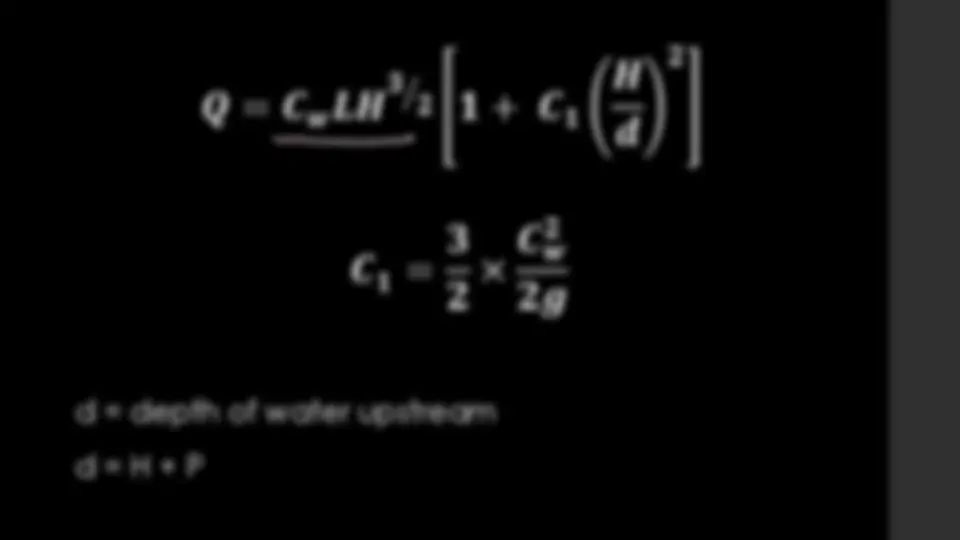

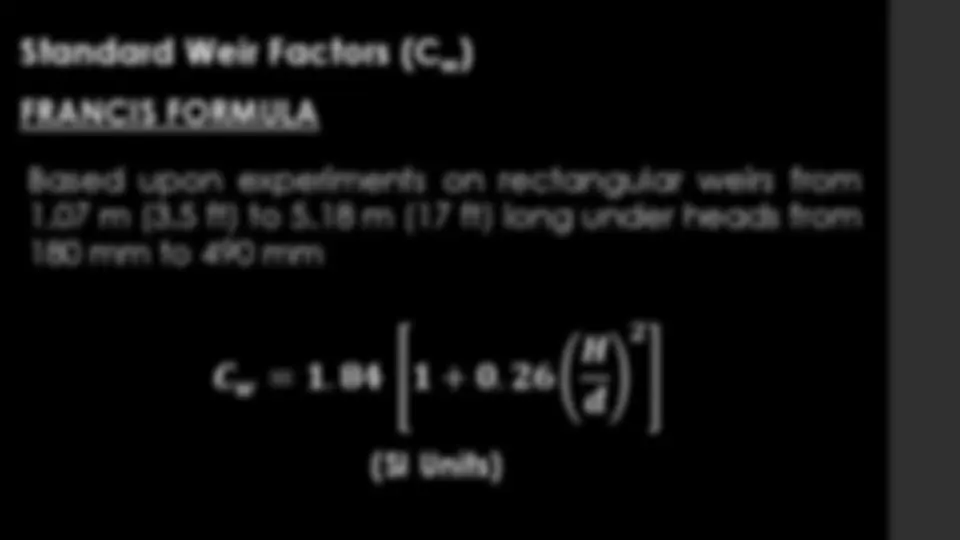
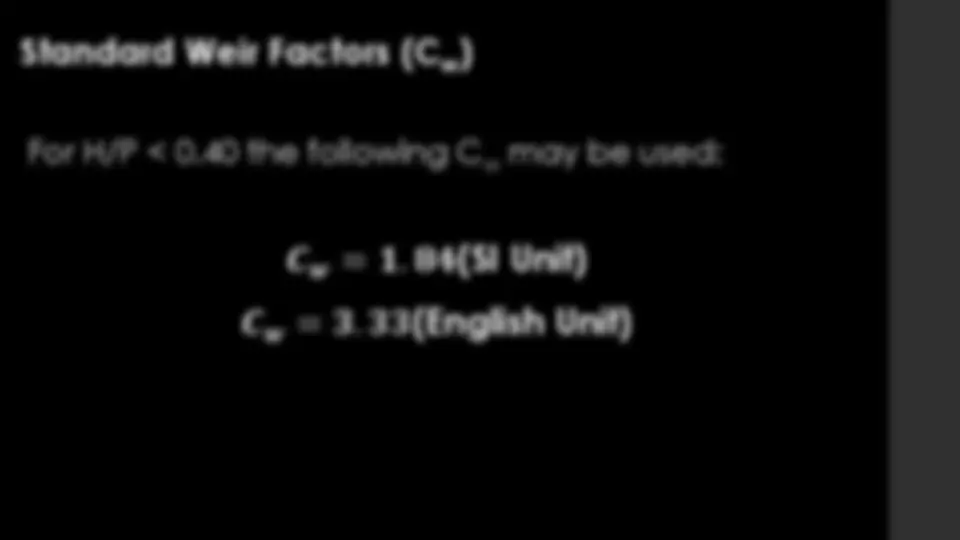
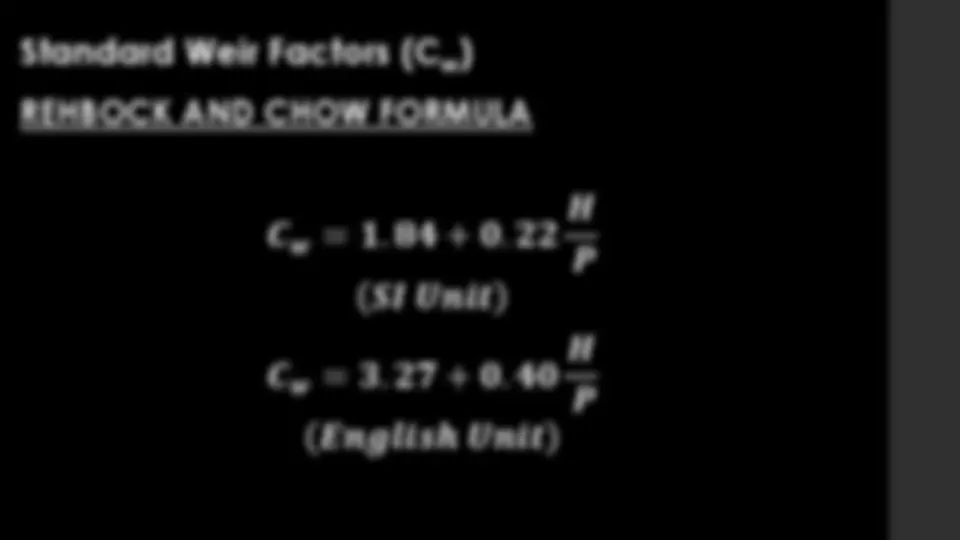
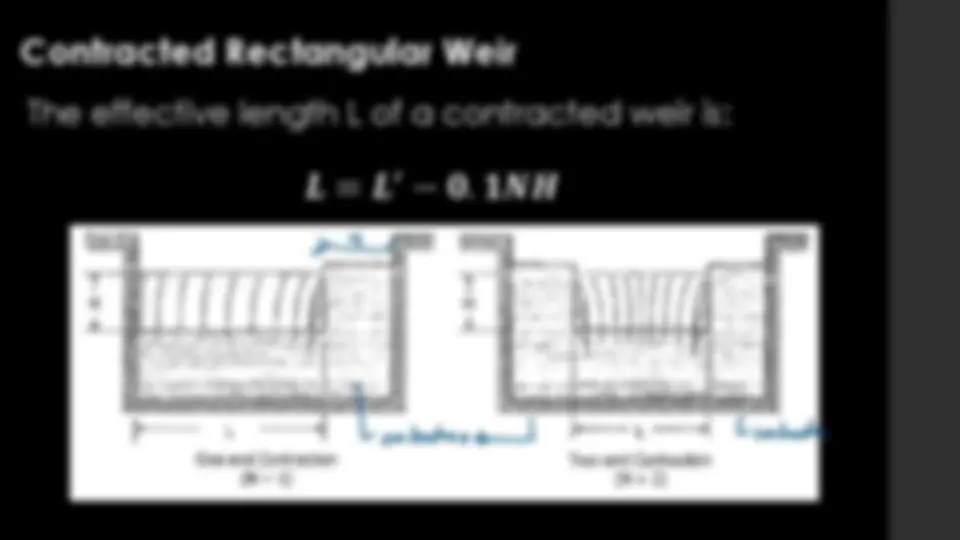


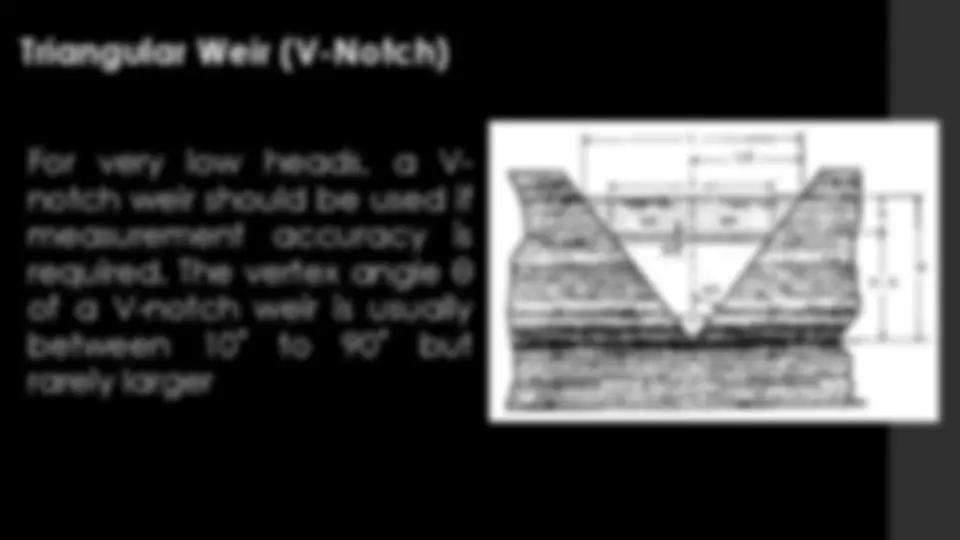
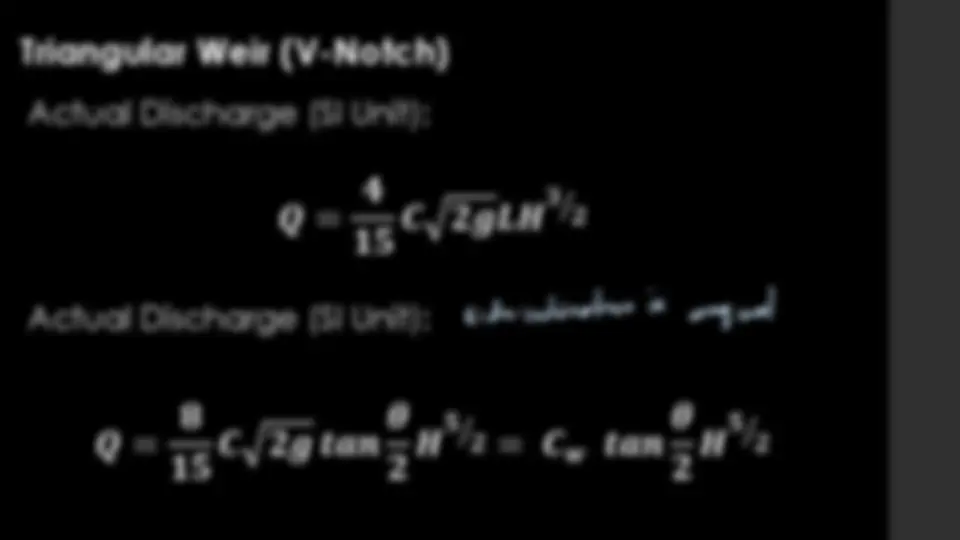
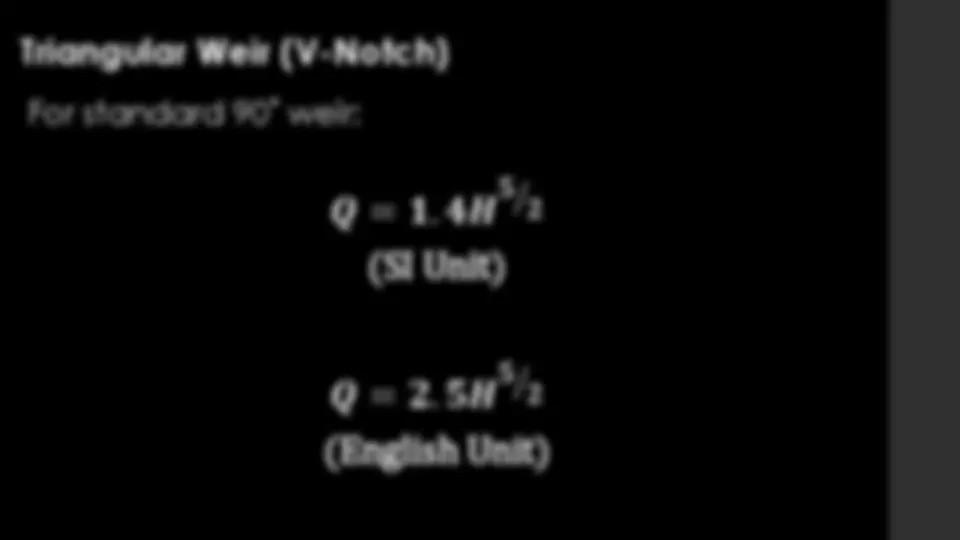

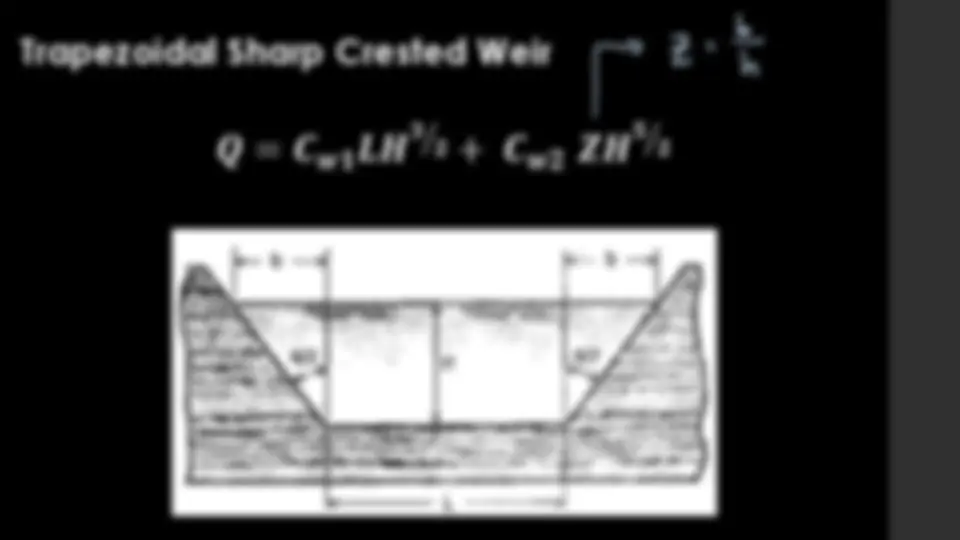

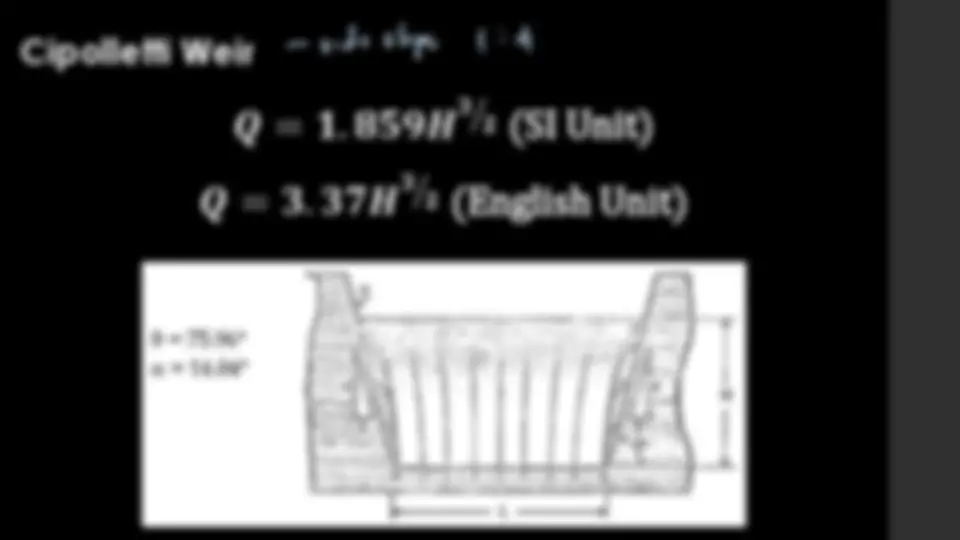

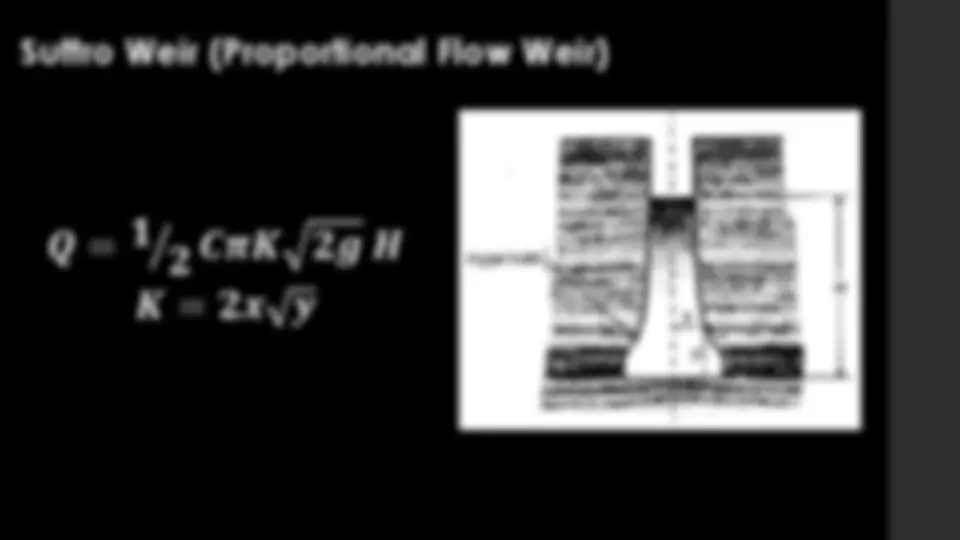

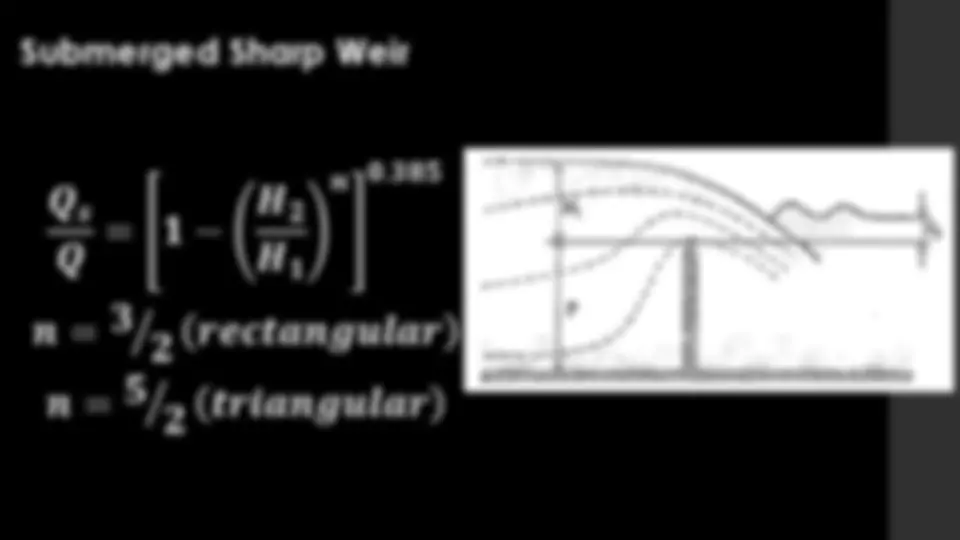

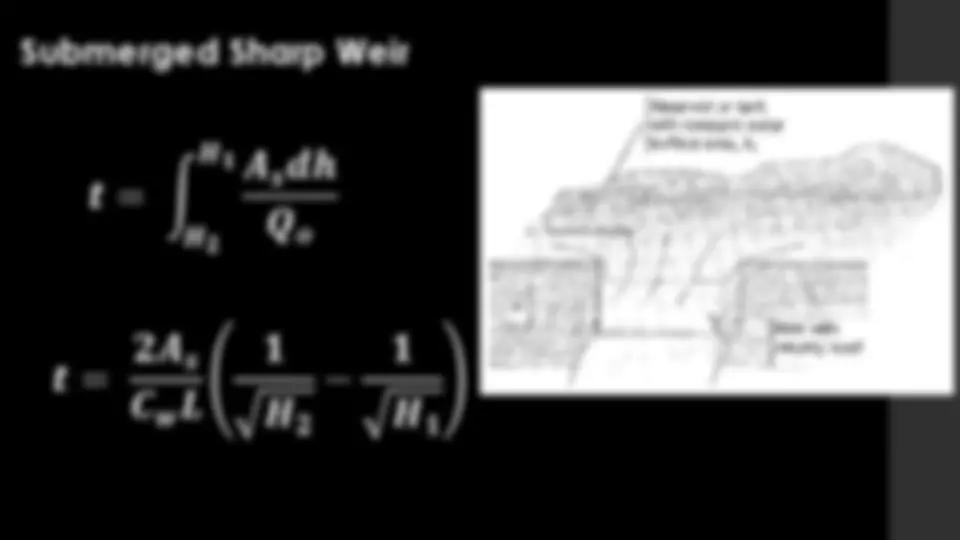
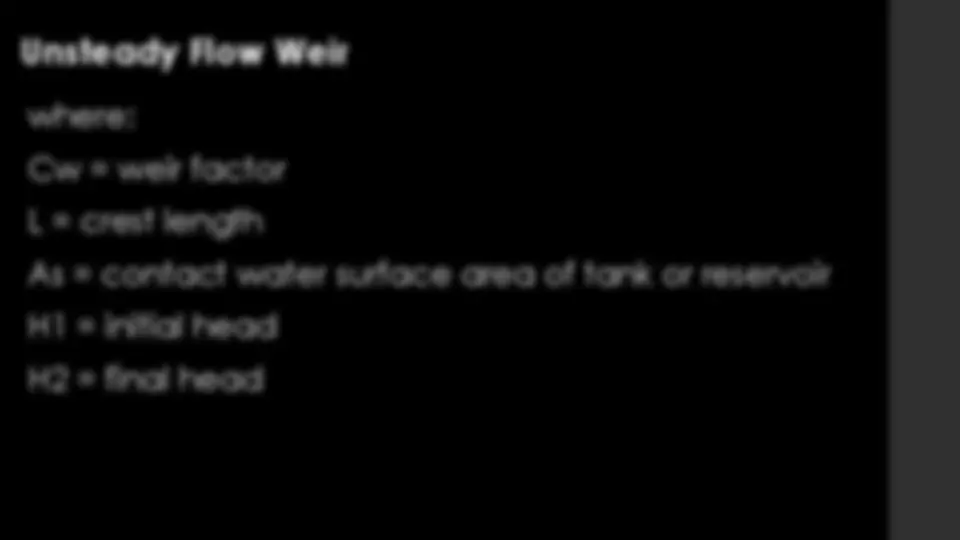

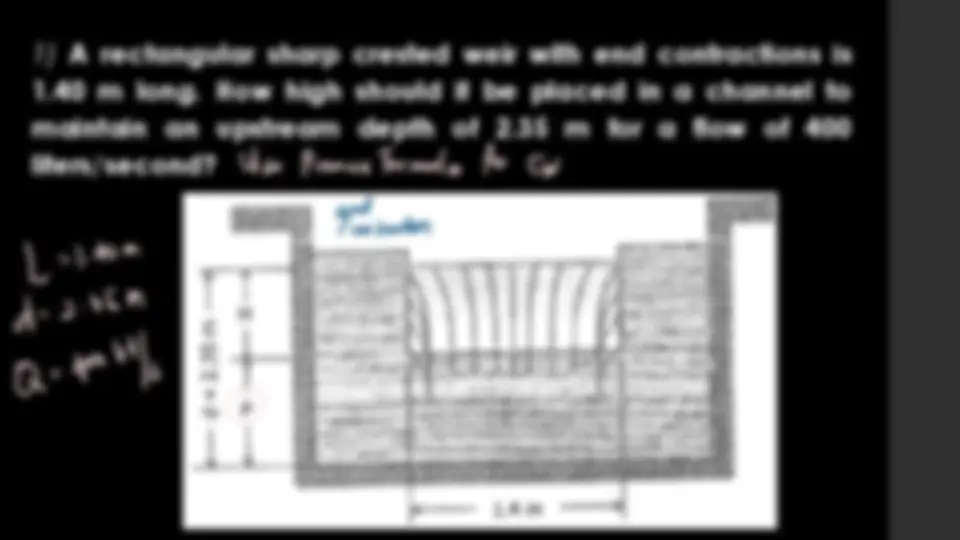
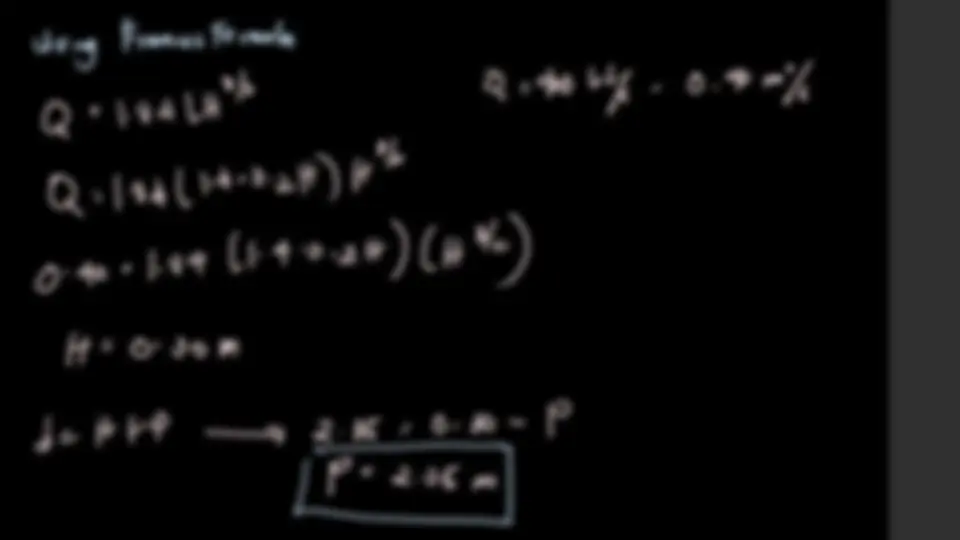
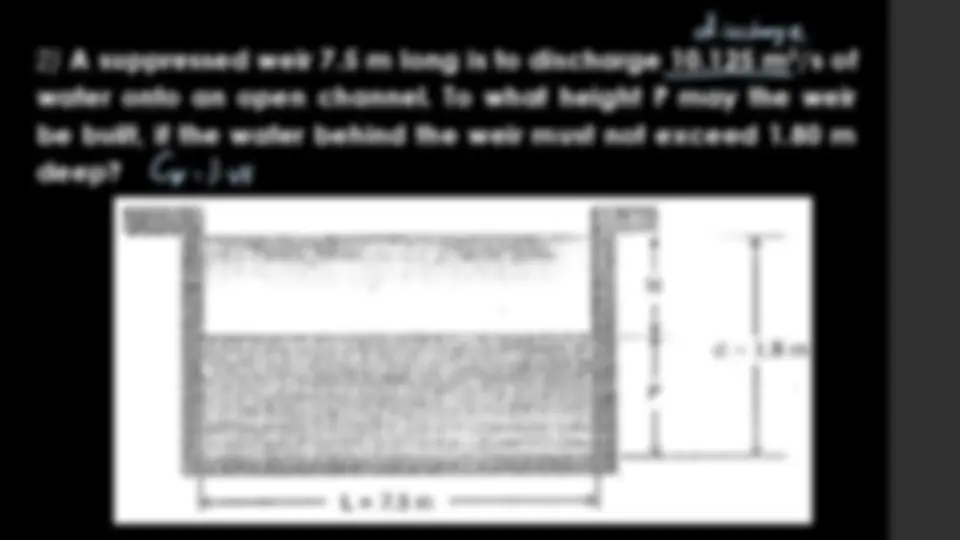
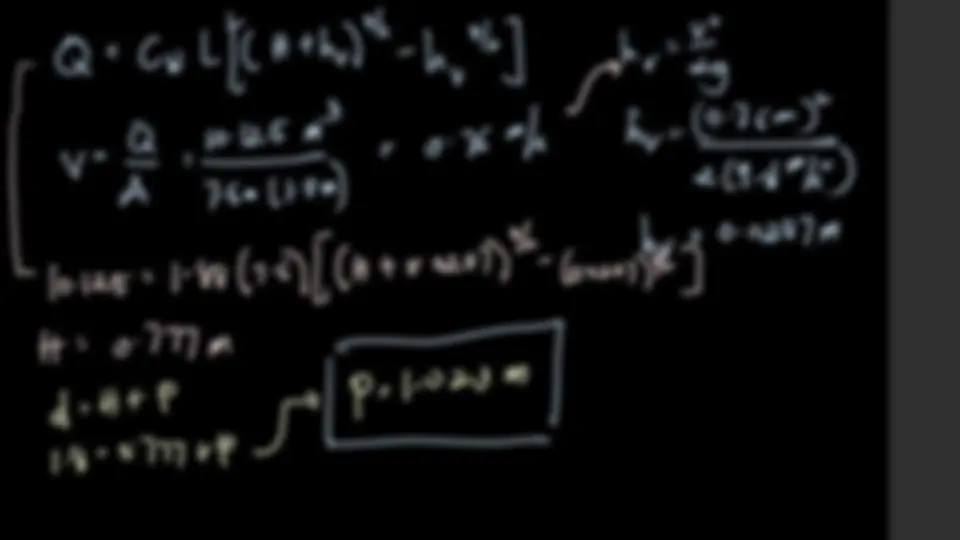
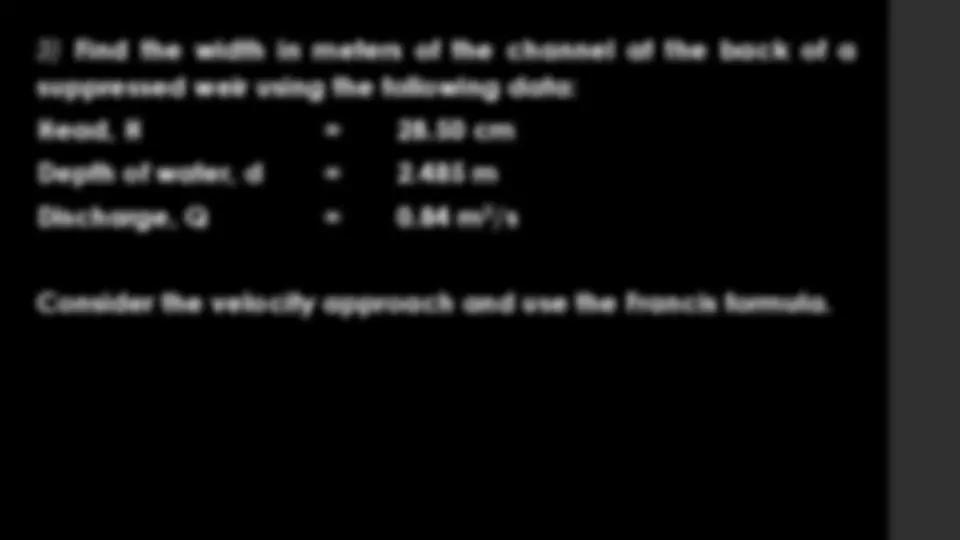
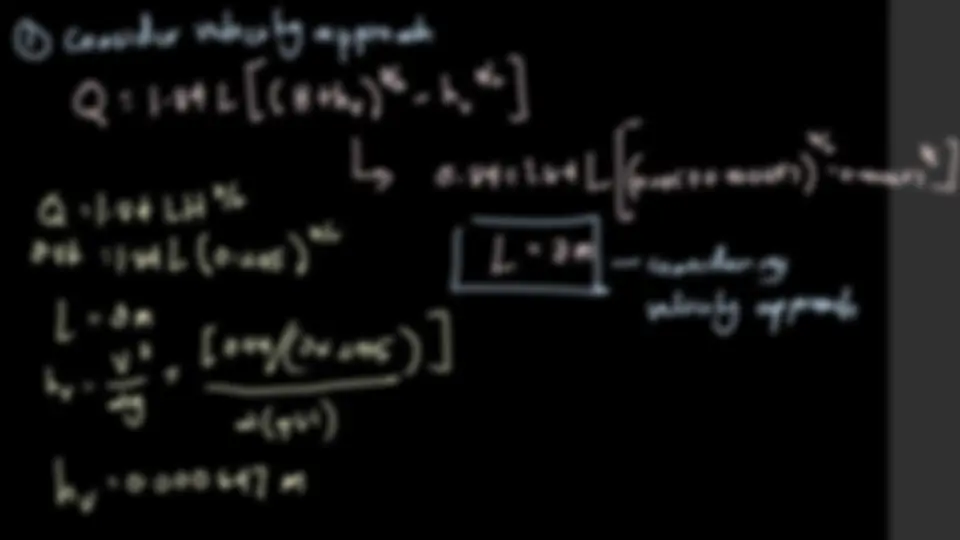
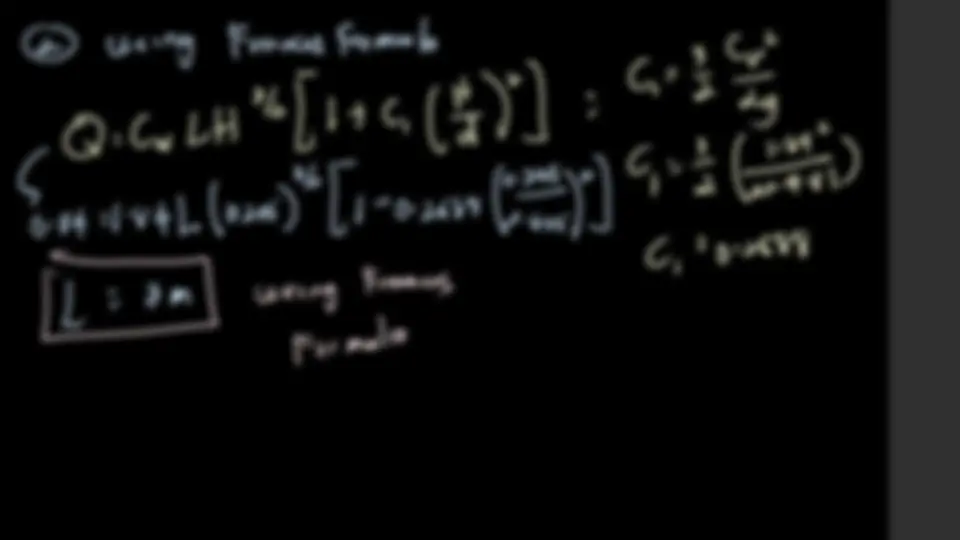
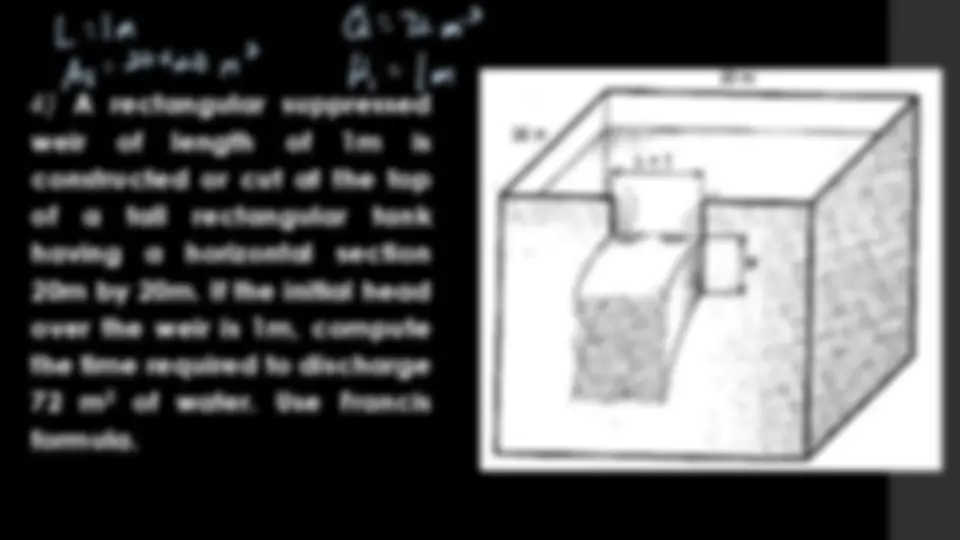
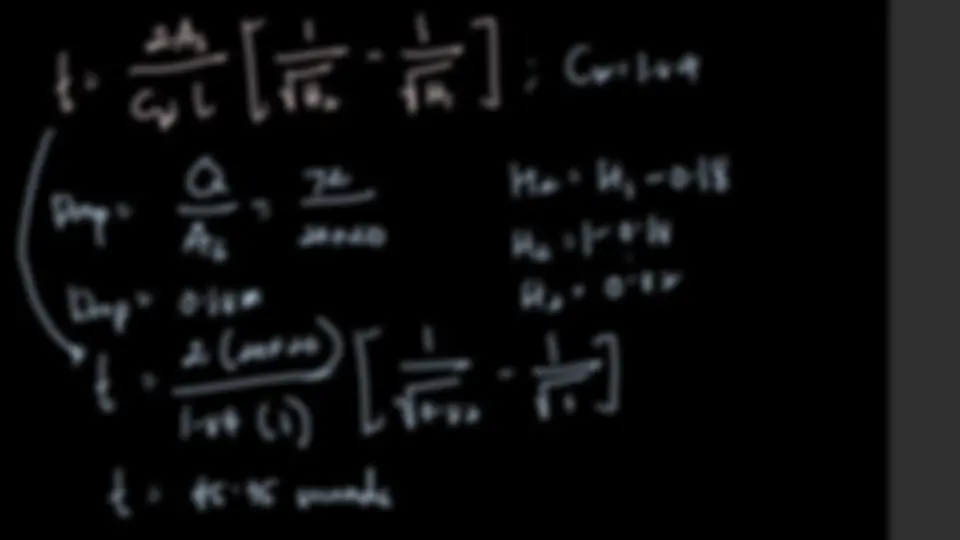
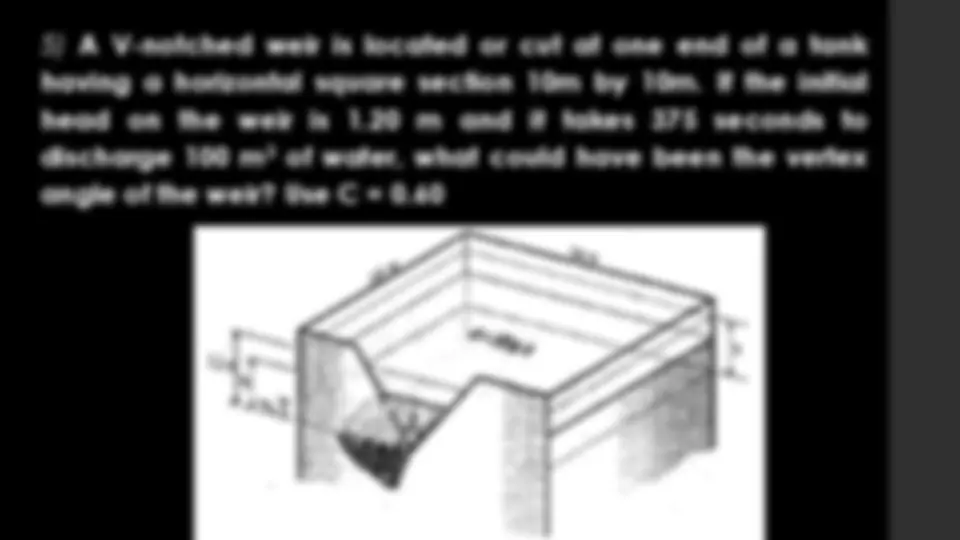
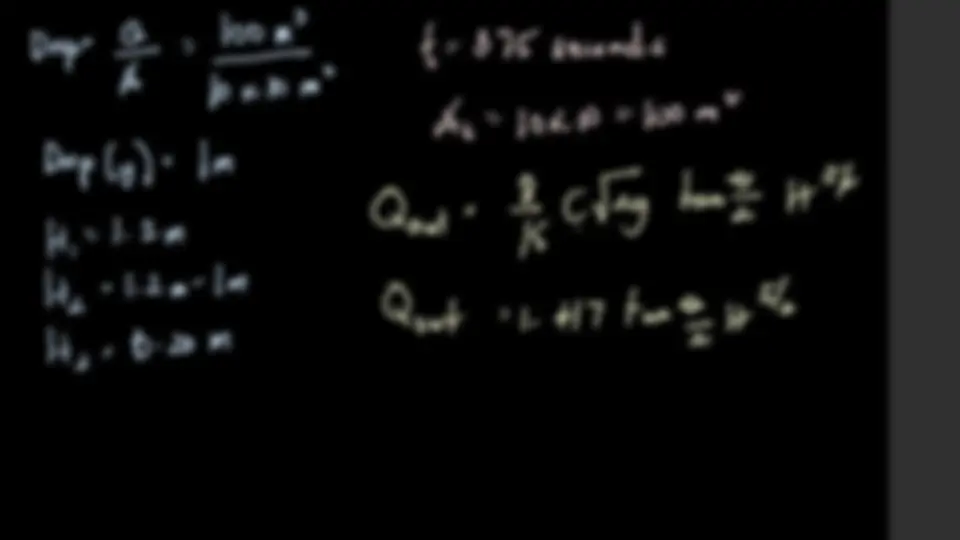
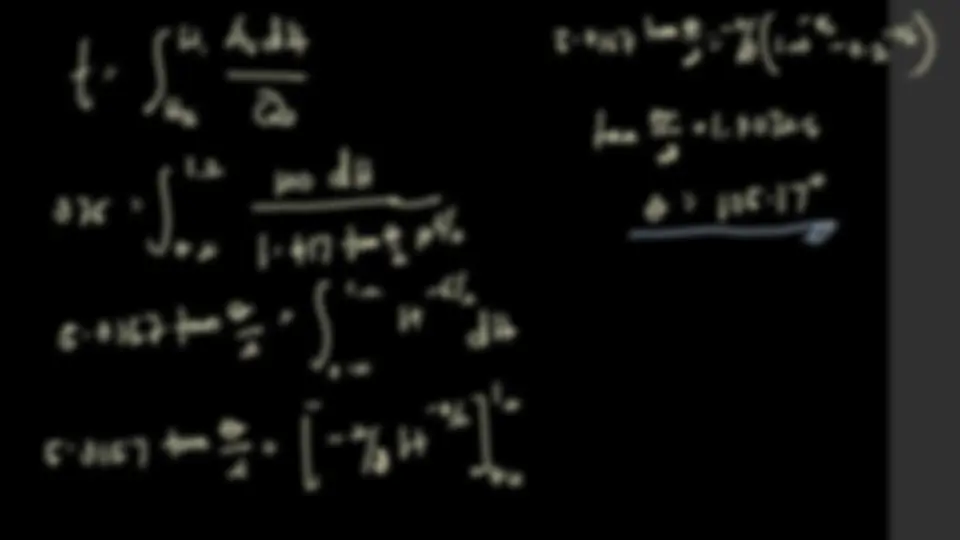
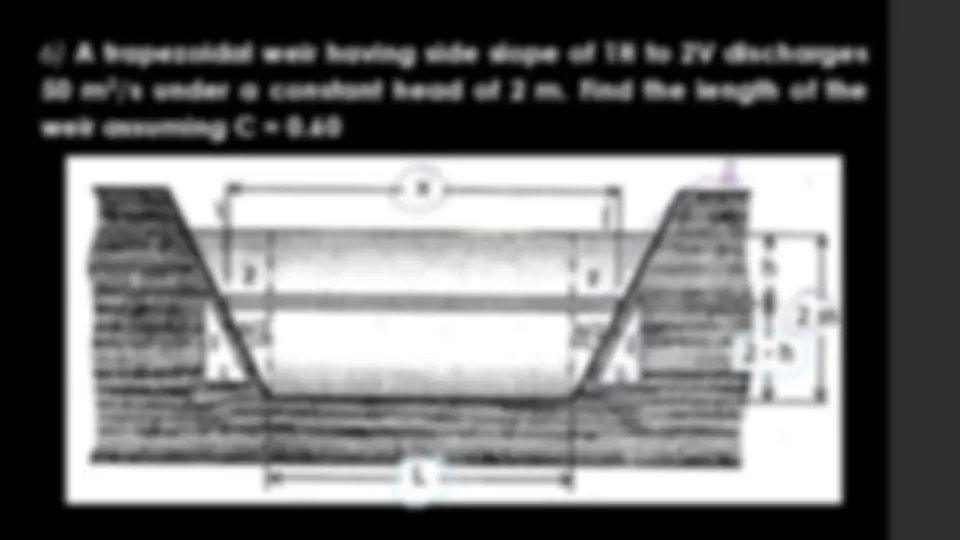
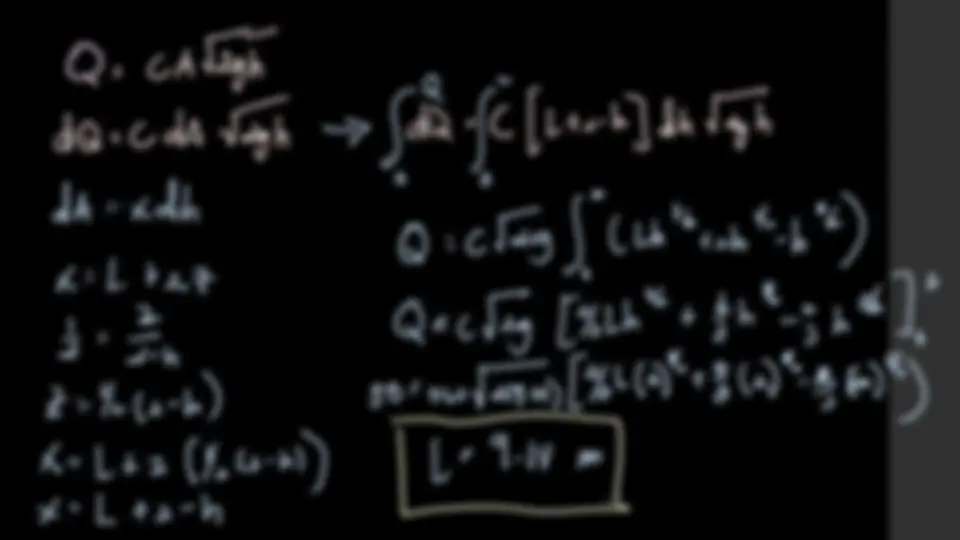
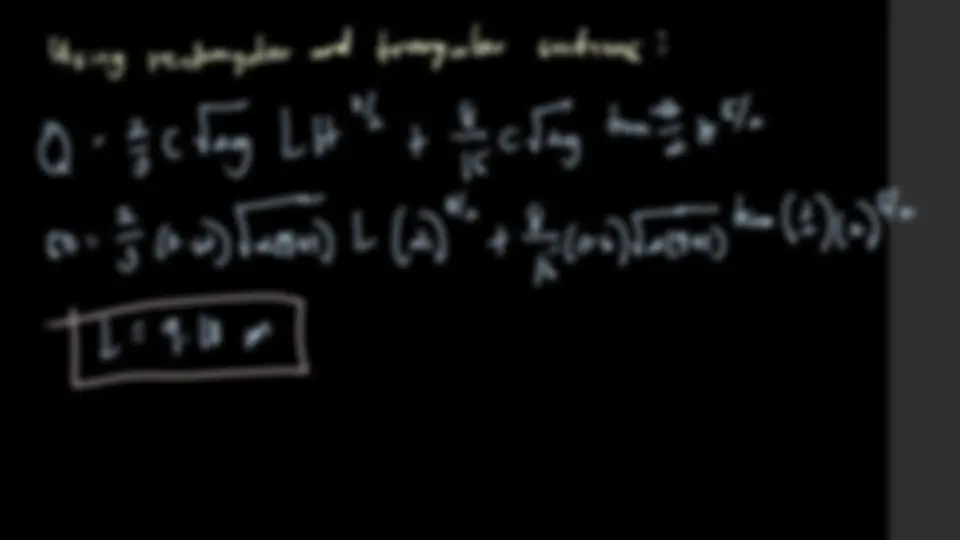


Study with the several resources on Docsity

Earn points by helping other students or get them with a premium plan


Prepare for your exams
Study with the several resources on Docsity

Earn points to download
Earn points by helping other students or get them with a premium plan
Community
Ask the community for help and clear up your study doubts
Discover the best universities in your country according to Docsity users
Free resources
Download our free guides on studying techniques, anxiety management strategies, and thesis advice from Docsity tutors
A concise overview of fluid flow measurement using weirs, focusing on different types such as rectangular, triangular, and trapezoidal weirs. It explains key concepts like nappe, crest, and head, and details standard weir specifications and formulas for calculating discharge, including francis, rehbock and chow, and bazin formulas. The document also includes sample problems to illustrate practical applications of weir measurements, making it a useful resource for students and professionals in civil and environmental engineering. It covers contracted and suppressed weirs, as well as v-notch weirs, offering a comprehensive guide to weir-based flow measurement techniques. Useful for university students.
Typology: Slides
1 / 50

This page cannot be seen from the preview
Don't miss anything!











































Contracted weir – weirs having sides sharp-edged so that the nappe is contracted in width or having end contractions, either one end or two ends Suppressed weir (full-width weir) – weirs having its length L being equal to the width of the channel so that the nappe suffers no end contractions Nappe – the overflowing seam in the weir Crest of weir – the edge or top surface of a weir with which the flowing liquid comes in contact
Drop-down curve – the downward curvature of the liquid surface before the weir Head, H – the distance between the liquid surface and the crest of the weir, measured before the drop- down curve
𝑸 = 𝟐 𝟑 𝑪 𝟐𝒈𝑳 𝑯 + 𝒉 𝒗 𝟑 𝟐 (^) − 𝒉 𝒗 𝟑 𝟐
𝑸 = 𝑪 𝒘 𝑳 𝑯 + 𝒉 𝒗 𝟑 𝟐 (^) − 𝒉 𝒗 𝟑 𝟐 C w is the weir factor equal to 2 3 𝐶 2𝑔 𝑸 = 𝑪 𝒘 𝑳𝑯 ൗ 𝟑 𝟐 If the H/P ratio is sufficiently small, the velocity approach becomes very small the h v 3/ may be neglected
Standard Weirs
The following specifications must be applied to standard rectangular weirs without end contractions: ➢The upstream face of the weir plate should be vertical and smooth ➢The crest edge shall be level, shall have a square upstream corner, and shall be narrow that the water will not touch it again after passing the upstream corner.
w
𝑪 𝒘 = 𝟏. 𝟖𝟒 𝟏 + 𝟎. 𝟐𝟔 𝑯 𝒅 𝟐 (SI Units) Based upon experiments on rectangular weirs from
w
𝑪 𝒘 = 𝟏. 𝟖𝟒 (SI Unit) 𝑪 𝒘 = 𝟑. 𝟑𝟑 (English Unit) For H/P < 0. 40 the following C w may be used:
w
𝑪 𝒘 = 𝟎. 𝟓𝟓𝟏𝟖 𝟑. 𝟐𝟒𝟖 + 𝟎. 𝟎𝟐𝟏𝟔𝟏 𝑯 𝟏 + 𝟎. 𝟓𝟓 𝑯 𝒅 𝟐 (SI Units) For rectangular weirs of length from 0. 5 m to 2. 0 m under heads from 50 mm to 600 mm.
Contracted Rectangular Weir
where: L’ = measure length of crest N = number of end contraction H = measured head
Triangular Weir (V-Notch)